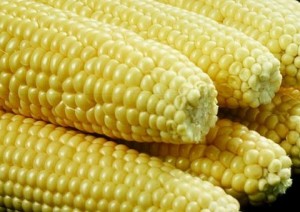Rising CO2, climate change projected to reduce availability of nutrients in Africa, worldwide – Research
 Imagine a world without the availability of critical nutrients such as protein to build and repair tissues, iron for blood production, and zinc for the defense of the immune system? That will have devastating impact on the body. But unfortunately that is what is likely to happen with the effect of climate change, according to a new research made available to ghanabusinessnews.com.
Imagine a world without the availability of critical nutrients such as protein to build and repair tissues, iron for blood production, and zinc for the defense of the immune system? That will have devastating impact on the body. But unfortunately that is what is likely to happen with the effect of climate change, according to a new research made available to ghanabusinessnews.com.
The research finds that, over the next 30 years, climate change and increasing carbon dioxide (CO2) could significantly reduce the availability of the above mentioned nutrients.
The total impacts of climate change shocks and elevated levels of CO2 in the atmosphere according to the research, are estimated to reduce growth in global per capita nutrient availability of protein, iron, and zinc by 19.5 per cent, 14.4 per cent, and 14.6 per cent, respectively.
A Senior Scientist at the International Food Policy Research Institute (IFPRI) and study co-author, Timothy Sulser explained that, even though a lot of progress has been made in reducing undernutrition around the world recently, global population growth over the next 30 years will require increasing the production of foods that provide sufficient nutrients.
“These findings suggest that climate change could slow progress on improvements in global nutrition by simply making key nutrients less available than they would be without it,” Sulser said.
The research notes that, though there are improvements in technology, and markets effects are projected to increase nutrient availability over current levels by 2050, these gains are substantially diminished by the negative impacts of rising concentrations of carbon dioxide.
While higher levels of CO2 can boost photosynthesis and growth in some plants, previous research has also found they reduce the concentration of key micronutrients in crops, the report stated.
The new study finds that wheat, rice, maize, barley, potatoes, soybeans, and vegetables are all projected to suffer nutrient losses of about 3 per cent on average by 2050 due to elevated CO2 concentration.
Protein, iron, and zinc availability in wheat are projected to be reduced by up to 12 per cent by 2050 in all regions, whereas people will likely experience the largest decreases in protein availability from wheat in places where wheat consumption is particularly high, including the former Soviet Union, Middle East, North Africa, and eastern Europe, the research noted.
The effects according to the research are not likely to be felt evenly around the world.
“Nutrient reductions are projected to be particularly severe in South Asia, the Middle East, Africa South of the Sahara, North Africa, and the former Soviet Union—regions largely comprised of low- and middle-income countries where levels of undernutrition are generally higher and diets are more vulnerable to direct impacts of changes in temperature and precipitation triggered by climate change,” it said.
Many countries currently experiencing high levels of nutrient deficiency, are also projected to be more affected by lower nutrient availability in the future.
Senior Economist and Fellow at RTI International and lead author of the study, Robert Beach, explained that, in general, people in low- and middle-income countries receive a larger portion of their nutrients from plant-based sources, which tend to have lower bioavailability than animal-based sources.
This he said means that, many people with already relatively low nutrient intake will likely become more vulnerable to deficiencies in iron, zinc, and protein as crops lose their nutrients. Many of these regions are also the ones expected to fuel the largest growth in populations and thus requiring the most growth in nutrient availability.
Sulser added that, although the study’s models were limited to 2050, extending the analysis through the second half of this century, when climate change is expected to have even stronger impacts, would result in even greater reductions in nutrient availability.
The researchers also emphasized the need for further work to build upon their findings, including additional study of climate impacts on animal sources, such as poultry, livestock, and fisheries, crops’ nutritional composition, nutrient deficiencies resulting from short-term climate shocks, and technologies that could mitigate reductions in nutrient availability.
“Diets and human health are incredibly complex and difficult to predict, and by reducing the availability of critical nutrients, climate change will further complicate efforts to eliminate undernutrition worldwide,” Sulser noted.
By Asabea Akonor
Copyright ©2019 by Creative Imaginations Publicity
All rights reserved. This article or any portion thereof may not be reproduced or used in any manner whatsoever without the express written permission of the publisher except for the use of brief quotations in reviews.
